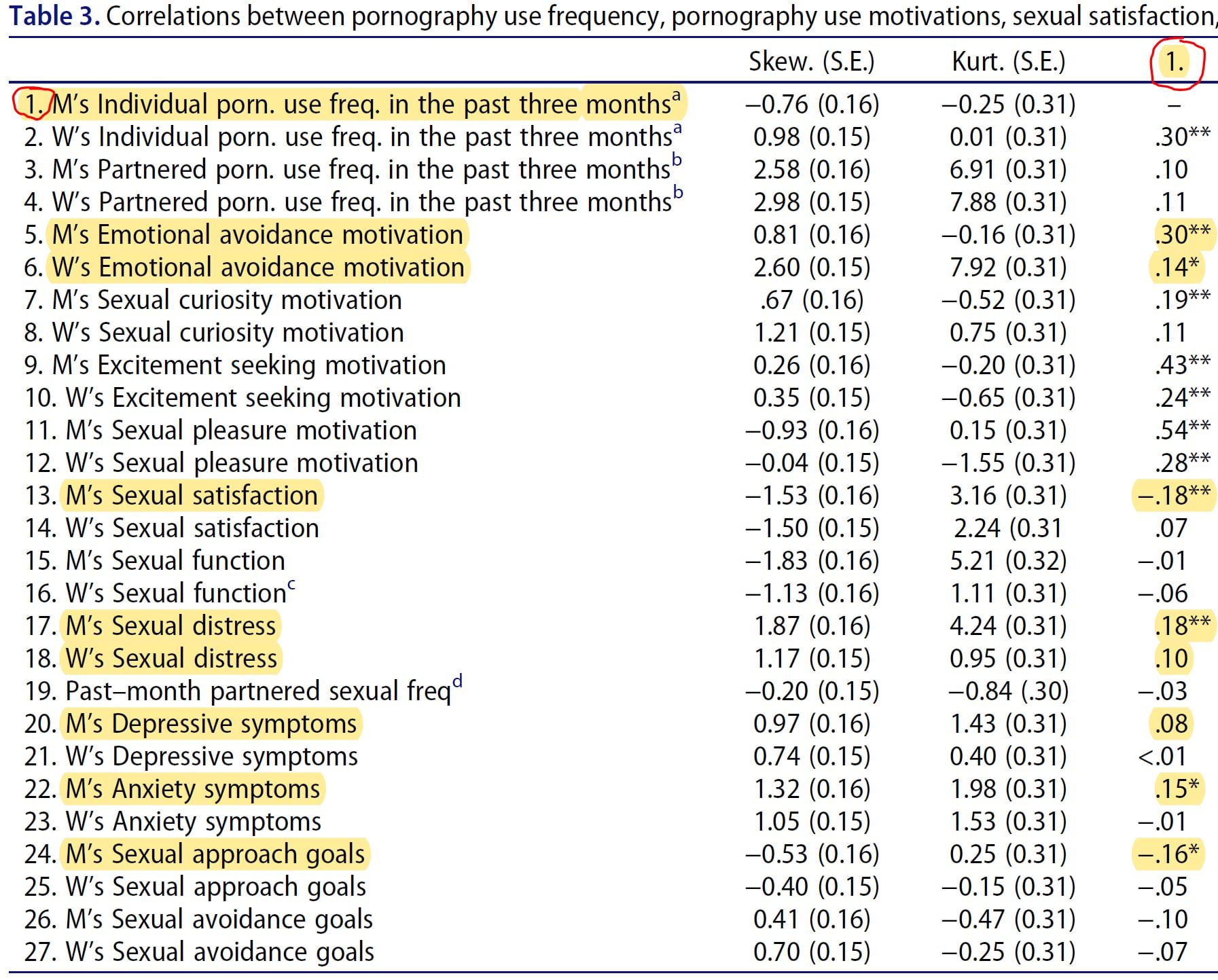KUMMENTI: Nationally representative studies usually report that the % of women in long-term relationships that regolarment l-użu tal-porn huwa relattivament pjuttost baxx. Allura, sejbiet li użu ogħla ta 'porn għan-nisa huwa relatat ma' riżultati aħjar ħafna drabi huwa bbażat fuq persentaġġ żgħir ta 'nisa li jużaw il-porn fuq bażi konsistenti. Dan jagħmel dawn is-sejbiet inqas interessanti għall-pubbliku ġenerali milli xi drabi l-awturi tagħhom iġiegħluna nemmnu.
Aktar interessanti huma r-riżultati għall-irġiel, billi l-maġġoranza l-kbira tal-irġiel jużaw il-porn. L-istudju attwali dwar il-koppji rrapporta li l-użu tal-porn tar-raġel kien relatat b'mod pożittiv ma 'tiegħu sodisfazzjon sesswali ifqar, ansjetà, depressjoni, dwejjaq sesswali akbar, u evitar emozzjonali. L-użu tal-porn tar-raġel kien ukoll relatat b'mod negattiv ma 'għanijiet sesswali (evitar / avviċinament).
~~~~~~~~~~~~~~~~~~~~~~~~~~~~~~~~~~~~~~~~~~~
J Sex Res . 2021 Mar 16;1-15.
doi: 10.1080 / 00224499.2021.1893261.
Beáta Bőthe 1 , Marie-Pier Vaillancourt-Morel 2 , Sophie Bergeron 1
PMID: 33724108
DOI: 10.1080/00224499.2021.1893261
Astratt
Pornography use is prevalent, even among partnered individuals. Although pornography use motivations represent key predictors of sexual behaviors, prior studies only assessed the associations between pornography use frequency and sexual wellbeing, with mixed results. This cross-sectional dyadic study examined the associations between partners’ individual and partnered pornography use frequency, motivations, and sexual wellbeing. Self-report data from 265 couples (Mage_men = 31.49 snin, SD = 8.26; Mage_women = 29.36 snin, SD = 6.74) were analyzed using an actor-partner interdependence model. Men’s greater emotional avoidance motivation was related to their own lower sexual function (β = -.24, p = .004) and greater sexual distress (β = .19, p = .012), while their higher sexual curiosity motivation was related to higher partnered sexual frequency (β = .15, p = .031), their own greater sexual satisfaction (β = .13, p = .022), sexual function (β = .16, p = .009), and lower sexual distress (β = -.13, p = .043). Women’s higher partnered pornography use frequency was associated with their own greater sexual function (β = .15, p = .034) and lower sexual distress (β = -.14, p = .012). Additionally, women’s higher individual pornography use frequency (β = .33, p < .001) and lower sexual pleasure motivation (β = -.35, p = .002) were associated with higher partnered sexual frequency. No partner effects were observed. Findings highlight that women’s pornography use frequency and each partner’s motivations might play crucial roles in couples’ sexual wellbeing.
